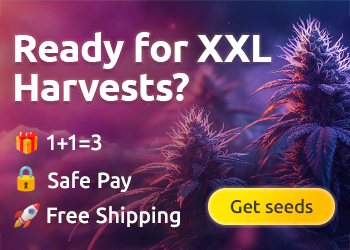A long-term study of those with treatment-resistant epilepsy has found that the cannabis compound cannabidiol (CBD) is directly associated with a reduction in seizures over a 192-week period.
 The study, published by the journal Epilepsia, was conducted by researchers affiliated with the University of Alabama, NYU Langone’s Comprehensive Epilepsy Center, Loma Linda University Children’s Hospital, Augusta University, Nationwide Children’s Hospital, Massachusetts General Hospital and the Idaho Comprehensive Epilepsy Center.
The study, published by the journal Epilepsia, was conducted by researchers affiliated with the University of Alabama, NYU Langone’s Comprehensive Epilepsy Center, Loma Linda University Children’s Hospital, Augusta University, Nationwide Children’s Hospital, Massachusetts General Hospital and the Idaho Comprehensive Epilepsy Center.
“Cannabidiol (CBD) expanded access program (EAP), initiated in 2014, provided add-on CBD to patients with treatment-resistant epilepsy (TRE) at 35 US epilepsy centers”, states the study. “Prior publications reported results through December 2016; herein, we present efficacy and safety results through January 2019.”
For the study patients received plant-derived highly purified CBD increasing from 2-10 mg/kg/d to tolerance or maximum 25-50 mg/kg/d dose, depending on the study site. Efficacy endpoints included percentage change from baseline in median monthly convulsive and total seizure frequency and ≥50%, ≥75%, and 100% responder rates across 12-week visit windows for up to 192 weeks. Adverse events (AEs) were documented at each visit.
Of 892 patients in the safety analysis set, the median age was 11.8 years, and patients were taking a median of three)antiseizure medications (ASMs) at baseline.
The median top CBD dose was 25 mg/kg/d, and the median exposure duration was 694 days.
“Median percentage reduction from baseline ranged from 50%-67% for convulsive seizures and 46%-66% for total seizures”, states the study. “Convulsive seizure responder rates ranged from 51%-59%, 33%-42%, and 11%-17% of patients across visit windows, respectively.” AEs were reported in 88% of patients and serious AEs in 41%; 8% withdrew because of an AE.
Researchers conclude that “Add-on CBD was associated with sustained seizure reduction up to 192 weeks with an acceptable safety profile and can be used for long-term treatment of TREs.”
The study’s full abstract can be found below.
Abstract
Objective: Cannabidiol (CBD) expanded access program (EAP), initiated in 2014, provided add-on CBD to patients with treatment-resistant epilepsy (TRE) at 35 US epilepsy centers. Prior publications reported results through December 2016; herein, we present efficacy and safety results through January 2019.
Methods: Patients received plant-derived highly purified CBD (Epidiolex®; 100 mg/mL oral solution), increasing from 2-10 mg/kg/d to tolerance or maximum 25-50 mg/kg/d dose, depending on the study site. Efficacy endpoints included percentage change from baseline in median monthly convulsive and total seizure frequency and ≥50%, ≥75%, and 100% responder rates across 12-week visit windows for up to 192 weeks. Adverse events (AEs) were documented at each visit.
Results: Of 892 patients in the safety analysis set, 322 (36%) withdrew; lack of efficacy (19%) and AEs (7%) were the most commonly reported primary reasons for withdrawal. Median (range) age was 11.8 years (0-74.5), and patients were taking a median (range) 3 (0-10) antiseizure medications (ASMs) at baseline; most common ASMs were clobazam (47%), levetiracetam (34%), and valproate (28%). Median top CBD dose was 25 mg/kg/d; median exposure duration was 694 days. Median percentage reduction from baseline ranged from 50%-67% for convulsive seizures and 46%-66% for total seizures. Convulsive seizure responder rates (≥50%, ≥75%, and 100% reduction) ranged from 51%-59%, 33%-42%, and 11%-17% of patients across visit windows, respectively. AEs were reported in 88% of patients and serious AEs in 41%; 8% withdrew because of an AE. There were 20 deaths during the study deemed unrelated to treatment by the investigator. Most common AEs (≥20% of patients) were diarrhea (33%), seizure (24%), and somnolence (23%).
Significance: Add-on CBD was associated with sustained seizure reduction up to 192 weeks with an acceptable safety profile and can be used for long-term treatment of TREs.







